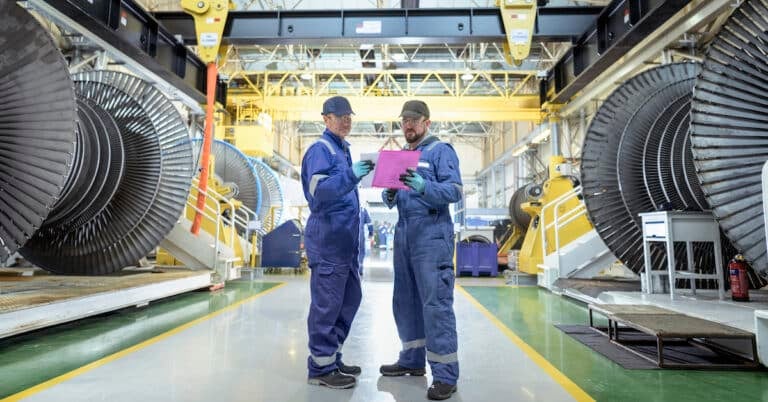As a business owner or manager, you know the importance of protecting your employees and ensuring that your workplace is safe. Creating and cultivating a safety culture is one of the most effective ways to do this. But building a safety culture can be difficult–it takes time, effort, and commitment from everyone in the organization.
First, What Does Building a Safety Culture Mean?
A lot of times, safety is seen as an administrative task–filling out checklists and making sure you check all the right boxes and file the correct forms. However, checklists and paperwork only go so far in preventing accidents. Building a safety culture means much more than optimizing your workflow to complete OSHA (Occupational Safety and Health Administration) forms. It means that you include every employee in your safety efforts. You recognize any negative attitudes around safety, make changes, and cultivate a more positive approach to safety. Also, building a safety culture means empowering your employees to report safety issues, hazards, and near misses to you.
Your safety culture is a valuable resource to build and grow as your company grows. So, here are our four tips for creating and maintaining a safety culture in your business.
1. Establish Clear Safety Protocols and Expectations
The first step to building a safety culture is to make sure your expectations and protocols are clear. This isn’t just about polishing up your safety policies. Instead, it’s about making sure management, supervisors, and your employees are all on the same page. Without this, employees may not know what you expect of them when it comes to safety. This is especially important if your employees have a production goal to meet. They need to know that the expectation is safety first, even if it comes at the cost of production. By establishing clear safety protocols and expectations, you can help reduce the risk of accidents happening in your workplace. This is the foundation of building a safety culture in the workplace.
2. Foster a Positive Attitude Towards Safety
If you haven’t been intentional with your company’s culture or attitude around safety, it’s possible that your team doesn’t have a positive one. Is your company culture built on trust, respect, and ethics? For example, a workplace with a lack of trust between employees and management typically ends up with a negative safety culture. This is because employees don’t trust safety officers, feel like safety is just enforcement of rules, and they fear punishment. Furthermore, in some cases, this results in employees hiding incidents, near misses, or minor injuries. This is why a positive attitude towards safety is essential! Everyone on your team should feel comfortable, confident, and included in your safety endeavors. Then, safety officers are there to support and protect employees, not punish them.
3. Encourage Open Communication About Safety Concerns
When it comes to safety in the workplace, communication is key. By encouraging open communication among your employees, you create an environment where you can address safety concerns and avoid potential hazards. If you’re building a safety culture, then you have to communicate to employees that you want them to give you feedback and report things. But, this also means you need a system in place for them to do so. Not everyone may feel comfortable bringing up a safety issue or hazard verbally, and some may want to remain anonymous in their report. It is important to provide several options for reporting accidents, incidents, near misses, hazards, concerns, and any level of workplace injuries. Additionally, it should be made clear that no repercussions will come from reporting hazards or incidents, as this is a key part of preventing future safety incidents.
4. Keep Safety Top of Mind by Monitoring Progress and Addressing Any Issues Promptly
It’s important to keep safety top of mind in your business by monitoring progress and addressing issues promptly. Safety should never be taken for granted, as even the smallest mistake can lead to a serious accident. When it comes to building a safety culture, make sure you have a system in place for tracking safety performance and addressing any problems that arise. If you do step one through three but don’t track and address issues, then you’re still at risk of a workplace accident. Also, employees can grow discouraged and stop reporting hazards if they feel like you’re not listening because you don’t address issues in a timely manner. Redlist’s Health Safety & Environmental (HSE) software can support you with this. With digital forms, real-time analytics, and automated safety workflows, our HSE software helps you better manage your safety plan and gives you all the tools for building a safety culture.

Next Steps for Building a Safety Culture
According to OSHA, building a safety culture actually has the largest impact on accident reduction out of any other strategy. But, it also makes good business sense. After all, accidents can cause injuries and lost time, leading to increased costs and decreased productivity. Make sure you and your team have the right technology and support to take the next steps toward building a safety culture. Schedule a demo to get started today.


